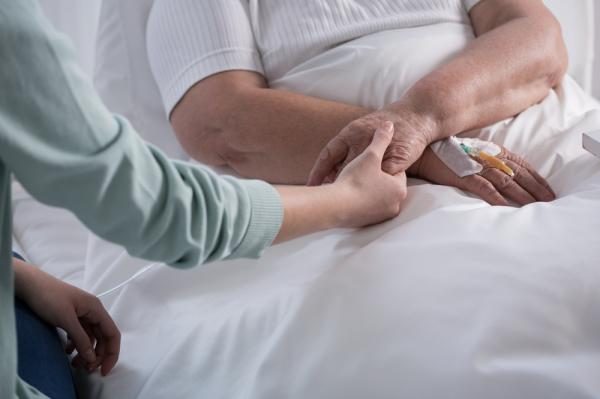[N]early 9 out of 10 caregivers for older Americans are unpaid, and those individuals work longer hours and receive less government support than their paid counterparts, according to a new study.
Approximately 900,000 Medicare beneficiaries received support from 2.3 million caregivers in 2011, according to the study published Wednesday in Health Affairs. The study looked at data from Medicare beneficiaries who lived in community settings and died within one year of study enrollment.
That’s just the tip of the iceberg. In 2015, roughly 34 million Americans provided unpaid care to an adults age 50 or older in the last 12 months, according to figures from the National Alliance for Caregiving and AARP.
Unpaid end-of-life caregivers provide nearly double the hours of support per week compared to other caregivers, but they did not receive additional pay from government or private insurance, according to the Health Affairs study.
The study illustrated the heavy economic burden family caregivers can face when they provide end-of-life support and how the healthcare system relies on family members to take on that care, according to Katherine Ornstein, assistant professor of geriatrics and palliative medicine at the Icahn School of Medicine at Mount Sinai in New York City and lead author of the study.
“We need to do more to make sure that our infrastructure is supporting (family caregiving) so that it can be done well and that the consequences for family members are not negative,” Ornstein said.
Medicare spending in 2011 on patients during their last six months of life accounted for 28% of the total $554 billion the program spent on healthcare that year, according to the Kaiser Family Foundation.
The value of unpaid care provided by friends or family members was valued at roughly $470 billion in 2013, according to the National Alliance for Caregiving and AARP.
Government and healthcare stakeholders can provide family caregivers with information and resources to help set and reschedule physician appointments, work with insurers or make care decisions to ease their burdens, Ornstein said.
Those resources could go a long way with spouse caregivers in particular. More than 42% of Medicare beneficiaries in the study received help from their spouses, according to Ornstein’s analysis. But nearly two-thirds of spouse caregivers reported that they received no support from family or friends.
Still, approximately half of Medicare beneficiaries received support from their daughters and one-third received help from their sons.
By comparison, 14% of study participants received caregiving support that wasn’t for end-of-life care from paid helpers and 20% secured paid help for end-of-life care, the study found.
Family dependence for end-of-life or aging care is only expected to rise as the elderly population will nearly double from 2012 to 2050, increasing to more than 83 million, according to the U.S. Census Bureau.
But family members and loved ones may not be able to meet those increasing care demands. A 2013 report by the AARP Public Policy Institute found that there were an average of about seven potential caregivers for every patient age 80 and older in 2010, but that ratio was expected to decrease to 4 to 1 by 2030 and to 3 to 1 by 2050.
Complete Article HERE!

